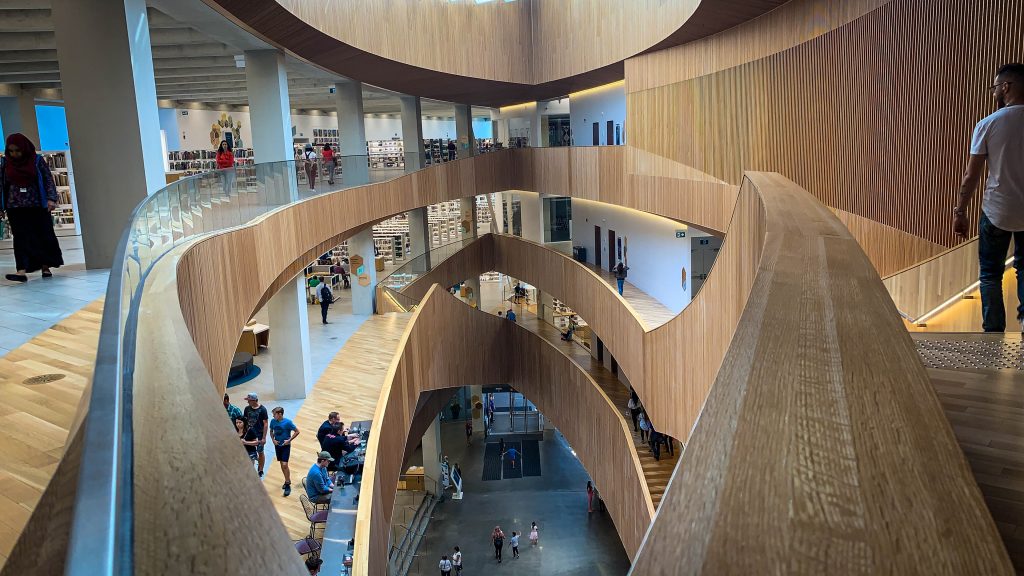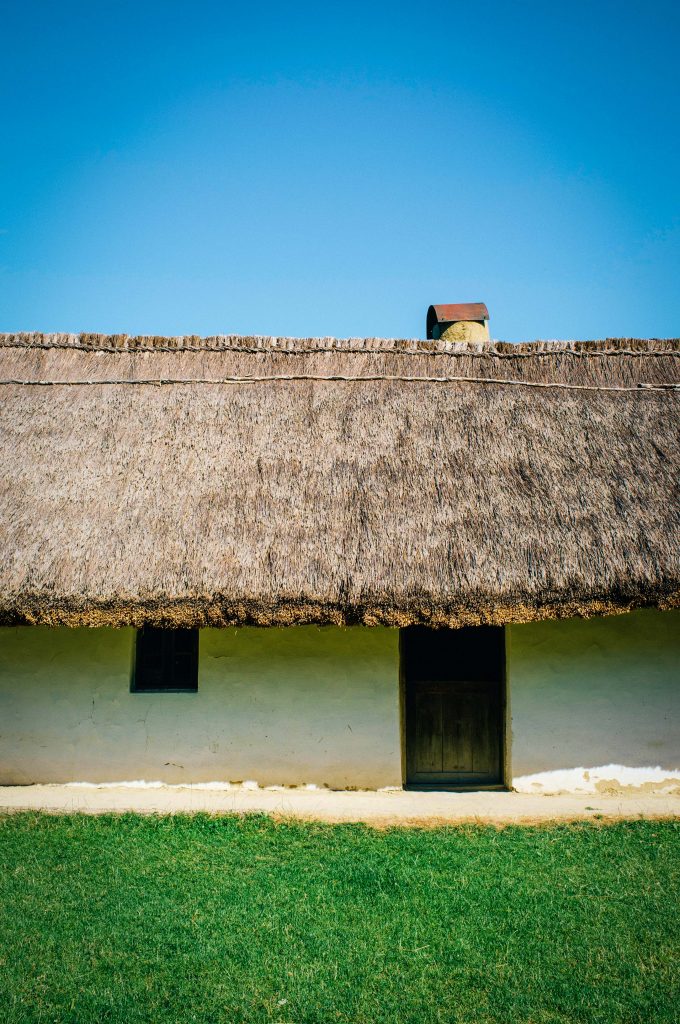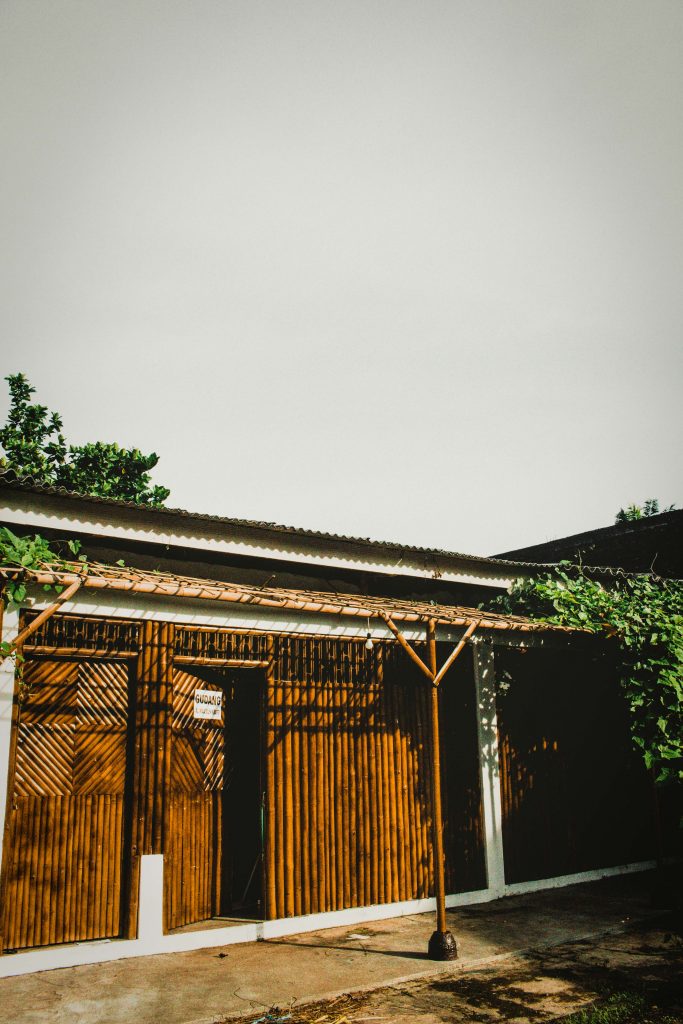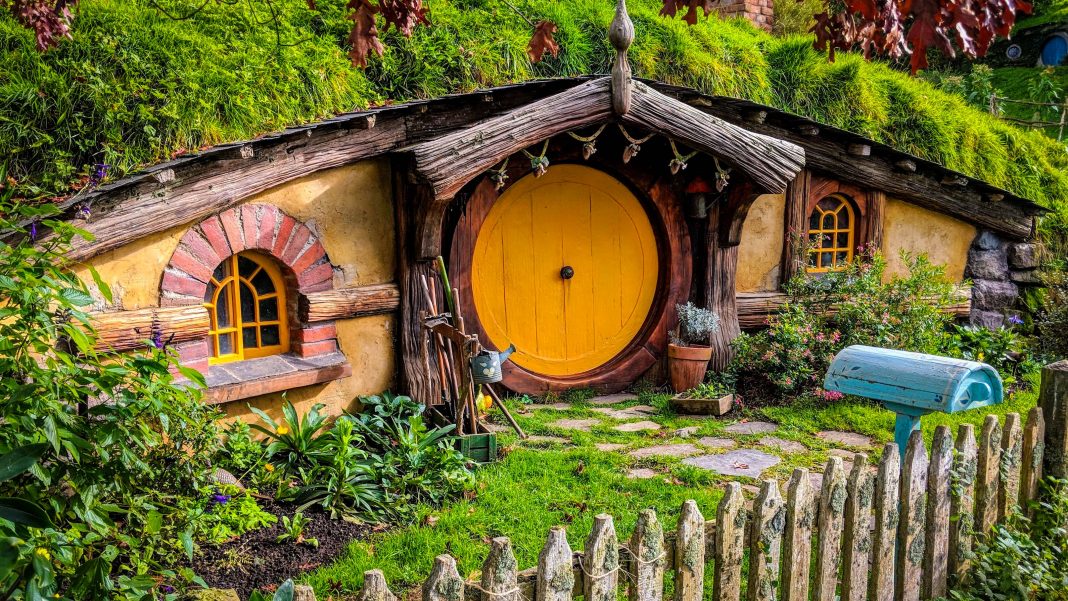Deep in the depths of the construction world, among the steel, cement and concrete, there are materials hidden, just waiting to be utilised. We’ve put together this guide exhibiting some of the main natural construction materials along with a few facts, figures, and important points to factor into your decisions when building from scratch.
Terms like “natural building”, “sustainable construction”, and “green architecture” often make us envisage a cob hut or Hobbit house in the countryside, but this couldn’t be further from the truth. Using the resources that mother nature has given us doesn’t have to harm what she has created, look unconventional, be expensive or particularly difficult. So, it’s about time that we stop the destructive construction material industries in their tracks; that’s right, we’re talking about limiting dependency on cement, plastic, concrete, oil, and steel.
This guide is based on the ACAN online seminar on natural materials from July 2021, where experts highlighted the fact that architects, planners, designers, local authorities, and individuals could make a real difference with the materials they choose. Choose well and you could contribute to the circular economy, local economy, local community, sustainability, and protection of the planet.
Decisions, Decisions: What to Bear in Mind
A good starting point for any kind of construction project aiming to be as sustainable as possible is to carry out a life cycle analysis: “The leading tool for the assessment of impact that products and services have on the environment”.
Here are 5 other aspects to consider when choosing the most appropriate and most sustainable material for your project:
- Where in the World Are You?
Perhaps it sounds obvious but every location in the world is slightly different in terms of temperature, humidity, air quality, wind strength, rainfall, etc. Consider what the weather is typically like where you are, how it is likely to vary over the coming years, and how you need to prepare for the impact of climate change. In an interview, Janna Laan Lomas of Grain Architecture told us that we need to design purposefully to face the elements: “A good rule of thumb is to have a good hat and a good pair of boots on your building”. - Look Around You
One of the biggest factors contributing to the increased amount of carbon emissions or cost is transport. So, why not cut out the middleman and use exactly what is on your doorstep? You might be surprised by what your surroundings have to offer. Look at what is locally available: those materials that are already being used in construction, the resources that are otherwise sent away as waste, and those which may need further development. - Size Isn’t Everything… Except Here.
It goes without saying that you can’t build something from nothing, so consider the size of the project from the beginning – if there isn’t enough to go around then you’ll just have to accept it and find an alternative. Consider how much of each material you will need, where you source it from, and what the most low-emission, healthy, and cost-efficient option will be. - Keeping It Tight
Chris Magwood highlights the importance of an airtight building, encouraging us to look at the properties of the layer you’re going to insert in order to keep it that way. There’s no point adding insulation if there are gaps in the building envelope letting air flow freely in and out. An airtightness barrier membrane is needed and the go-to is often plastic. However, this is avoidable. An airtight design and structure, and picking the right materials, means you can combine airtightness and higher building efficiency with healthy breathability. - Designing for an Urban Environment
Some key characteristics of materials on which to focus when building in an urban setting include:
- sound-absorbing ability (acoustic insulation);
- optimising indoor air quality while shutting out pollution, dust, and emissions;
- regulating the temperature, while keeping the climate and heat island effect in mind.
Your Options – Choose Wisely
So, now you’ve got a considerations to-do list, let’s see exactly what materials are on offer. Follow the links below to find out more information on each material, and discover the advantages and challenges that come with each of them:
Wood or Timber
This is possibly one of the first materials people think of when it comes to plant-based buildings. With the huge variety of species on offer, be sure to do your research. Find the most appropriate type of wood for your build. In 2015, the European wooden house industry was worth €7.74 billion.

Image credit: Unsplash Juan Ferrari
- The top 7 European countries constructing wooden houses are currently Germany, UK, Sweden, Finland, Austria, Italy, and Estonia.
- In 2002, 1 in 6 homes built in the UK were constructed using timber frame methods. By 2014, 1 in every 3 detached homes were built with a timber frame.
- Outside of Europe, the USA, Canada, Japan, Australia, and parts of East-Asia are among the top builders of wood houses.
- Estimates suggest that the use of engineered wood products in the European building sector could have the potential to store roughly 46 million tonnes of CO2-eqv. per year in 2030.
- Every cubic metre of wood used in construction can retain 1 ton of CO2.
- 1/3 of annual timber growth in Austria would cover the country’s construction industry lumber needs for the year.
- In 2013, a UK government report noted that we throw away about 4.6 million tons of wood per year, of which 1.5 million tons “is clean solid, untreated wood”.
Find out more by checking out our fact file.
Straw
While you might think straw is too flimsy to be a building material, it has actually been used in construction for centuries. It’s definitely not going to be blown down by any big bad wolf like in the fairy tales!

- Straw homes have been built since the Stone Age, roughly 2.5 to 2 million years ago. Perhaps it should be called the ‘Straw Age’?!
- Meanwhile in Germany, straw-bale construction dates back 400 years. Roofs thatched with straw can also traditionally be seen across Europe, Russia, and northern parts of East Asia.
- The invention of the mechanical hay- and straw-baler in the USA in the 1850s increased the use of straw in construction. The introduction of the hay press in the 1890s made the process even easier. It was in Nebraska, where trees were so scarce and straw readily available from growing wheat, that straw bale homes really took off.
- Europe produces 144 million tonnes of straw as a waste product from wheat every year.
- When protected from the elements correctly, straw bale insulation can easily last for decades. There are even examples of 100-year-old straw bale homes.
- While the cost is entirely dependent on the size and shape of the building, as well as how you construct it, estimates suggest a small house with two rooms made of straw bales may cost around £10,000 to build, and a large 3 bedroomed house up to £40,000.
- However, it is worth bearing in mind that once built, savings of up to 75% can be made in energy and fuel costs compared to a conventional house.
- Straw can sequester up to 1.35 kg of CO2/kg.
- Check out some straw bale houses around the world here.
Find out more by checking out our fact file.
Mud and Earth
This is one of the most versatile materials out there and great for using in combination with other natural resources. It’s a true all-rounder and as a construction material comes in many different forms. Each type can be used as stand-alone sustainable solutions or combined to make a combi-material.

- Mud has been the world’s primary building material for 10 millennia and is still being used by 1/3 of the world’s population for housing. However, it has only just made it onto architecture and engineering curricula very recently.
- Around half of the world’s population still live in homes made of earth.
- The first mud-based mix used for construction (cob) can be traced back to the 11th century in northern Africa.
- Cob was the standard building material in the UK until industrialisation allowed bricks to be mass produced cheaply.
- Most cob (mud) homes found in the UK are between 200 and 400 years old, while many rammed-earth houses built in France over 100 years ago are still used today. Many of these are now disguised, having been rendered in plaster.
- Mudbrick is also referred to as ‘Adobe’, a Spanish name meaning ‘mud’ or ‘puddled earth’.
- Raw earth has 1/40 the carbon footprint of concrete.
- Although it is one of the most sustainable materials we could use for construction, the cost and ease of building with mud and earth can vary massively across the globe.
- In Germany, you need a licence costing between €20,000-30,000 to build your home from rammed earth.
- In Austria and Switzerland, it’s very simple and in the UK, it can actually be easier to obtain planning permission if you decide to build with rammed earth.
- In Italy meanwhile, you cannot use rammed earth for structural work at all.
- The cost also varies. One expert estimates a cost of $250 sq/m and nearer $790 for double brick. While in Bangladesh, Simple Action for the Environment built a rammed earth home in 2011 with each square foot of wall costing $0.34 to build.
Find out more by checking out our fact file.
Hemp
Hemp’s popularity has increased hugely over recent years with a variety of applications. It is primarily a non-structural material but none-the-less one with huge versatility in construction. Why not take a look at our to find out more about its uses, types, advantages, and disadvantages?
- Hemp-based structures date back to Roman times.
- Hempcrete was developed in France in the mid-1980s. They constructed the first contemporary hempcrete building in 1986.
- France is still leading the way with the most construction projects using hemp.
- Hemp currently makes up less than 0.5% of the 3.3 million tonnes of insulation materials used annually (2020). This is expected to rise.
- Countries pulling ahead in terms of hemp production and the potential to develop a hemp building sector include: Belgium, Netherlands, Canada, Czech Republic, Ireland, Ukraine and Spain, while the UK, Israel and the USA are not far behind.
- China is in the top spot in terms of industrial hemp production for a variety of applications because they never banned its cultivation.
- The first home made from hempcrete in the USA was constructed in 2010. In 2019, there were already more than 50 homes built with hempcrete in the USA.
- While the cost of building with hemp may be high, this often pays off in the end. One couple in the UK had a budget of £150,000 but ended up spending roughly £300,000. However, the savings to energy bills, and the higher price you can then sell the building at, make the investment more palatable.
- Of course, cost also depends on which other materials you are using alongside hemp, the size of the project, and the cost of labour.
- Estimates for the cost of hempcrete vary. One source approximates at $135 per sq/m based on 12-inch-thick walls. More information about the cost of constructing with hemp can be found here.
Cork
That’s right, the very same stuff that’s used to plug wine bottles. And if it’s good enough for our wine, then it’s got to be good enough for our buildings. So, what’s the deal with using cork in construction?

- Cork is obtained from the outer layer of an oak species called cork oak. These trees can be found across the western Mediterranean regions of Europe and Africa.
- Cork oak forests cover roughly 2.1 million hectares – a third of which is in Portugal.
- Portugal and Spain generate 49.6% and 30.5% of the total cork material respectively.
- Cork represents 1% of Portugal’s GDP with annual exports totalling over €1,346 million.
- Cork has been used by humans since Ancient Egyptian times.
- During its lifetime (250 years), a cork tree will generate roughly 4 times more cork bark if subjected to stripping. The cork oak replaces its bark approximately once every 9 years.
- According to the World Wildlife Fund, cork oak forests also “support one of the highest levels of biodiversity among forest habitats, as well as the highest diversity of plants found anywhere in the world” – just one more reason to keep our cork oak trees happy, healthy and thriving!
- Increasing demand for cork as a construction material leads us to plant more cork oak trees, creating more habitats for these species.
Bamboo
This giant grass is a great alternative to timber. It has multiple applications and has already been used for centuries. Bamboo in construction really dropped back onto people’s radars in the 1980s due to the global shortage of housing materials. But how, when, where, and why should we be using it today?

- Although they may look tree-like, bamboo is actually a grass.
- There are over 1,575 species of bamboo of which 1,200 are woody bamboo plants, and only 20-38 are suitable for use in construction.
- Bamboo grows naturally in tropical, sub-tropical, and mild temperate regions. It is native to every continent except Europe and Antarctica, but the majority is found in Asia, Africa, and Latin America.
- It can grow between 7.5cm and 40cm per day.
- Bamboo can be harvested 3-4 years after planting and then once a year after that for up to 120 years in some species and indefinitely in others.
- Bamboo is useful for different applications at different ages:
- <30 days perfect for eating
- 6-9 months for baskets
- 2-3 years for bamboo boards or laminations
- 3-6 years for construction
- >6 years bamboo gradually loses strength up to 12 years old
- Among other uses, the Chinese invented the first suspension bridges using bamboo to cross rivers. Thomas Edison used carbonised bamboo for the first light filaments.
- This “green gold”, as it has been nicknamed, can sequester 6-13 Mg (metric ton) per ha per year, or up to 600 tonnes per hectare over a 30-year period. That’s a longer carbon retention time than Chinese fir trees, a 50m-high evergreen coniferous tree.
- Bamboo generates roughly 30% more oxygen compared to hardwood forests.
- One report estimated that, by 2015, bamboo would supplement China’s timber supply by 2 million m3 per year.
- While bamboo can be a relatively cheap building material if it is locally sourced, the cost of transport to other parts of the world may significantly increase the price. Material type and building techniques must also be taken into consideration.
- One example was a two-storey house constructed out of bamboo on a low budget for $10,000.
- However, if you choose to build with prime-quality bamboo then it could cost as much as $200,000.
- The resilience of bamboo is proven: it was the only plant to survive the radiation of the atomic bombings in Hiroshima in 1945.
Natural Fibres
These are essentially any fibre materials that grow from plants or from animals. “Fibres are thread-like materials” with the most common types in construction being: hemp wool; sheep’s wool; wood fibre; cork fibre; straw fibre; and cellulose fibres.
- Natural fibres have been used for more than 7,000 years. Flax, for instance, was used for the burial shrouds of Egyptian pharaohs. Chemical fibres, on the other hand, have only been available since the late 1800s.
- A primary use of natural fibres is to combine them to use as composite materials.
- They can also be blended with resins as “fibres by themselves cannot be used to sustain actual loads. Therefore, resin is used to bind and protects the fibres”.
- The performance of natural fibres depends on the fibre count, their length, shape, and arrangement.
- The first known application of natural fibre composites was straw-reinforced clay used for bricks and pottery.
- Traditionally, natural fibres have been widely used for non-structural purposes such as rope, bags, brooms, roof material, and wall insulations. It is particularly popular in rural areas of developing countries. However, natural fibres can be found in large quantities all around the world.
- Structurally and infrastructurally, natural composites have been used in load-bearing beams (traditionally made from timber), roofs, multipurpose panels, water tanks, and pedestrian bridges.
- After electricity generation, the roofing sector is the second largest user of glass fibre in Europe. In 3rd place is industrial infrastructure, whose uses include corrosion resistance, pipes, and tanks. This could potentially be replaced with natural fibres.
- The fibres hemp, jute, and kenaf are most commonly used in developing interior architecture elements such as workspace panels and furnishings, while wood fibres are mostly used for modular house construction.
- The cost of natural fibre production is much lower than for traditional fibre materials:
- Natural fibre = $200-1,000/ton
- Glass fibre = $1,200-1,800/ton
- Carbon fibre = $12,500/ton
- Estimates suggest that natural fibre prices will remain low, likely below €1/kg.
- One paper published in 2019 predicted comprehensive growth of natural fibre-reinforced polymers in the automotive and construction industries.
What’s Next?
So now that we’ve dispelled some of the myths surrounding natural material construction – that it’s not all tree houses, mud burrows, and sandcastles – and you’ve seen what some of your options are, we think it’s fair to say that there’s no one right answer. Dig deeper into the world of natural materials and find your perfect match. Why not find out just why sustainable construction is so important (see here) or check out our handy fact files on each of the materials listed above by following the links in the relevant sections. Happy building!


